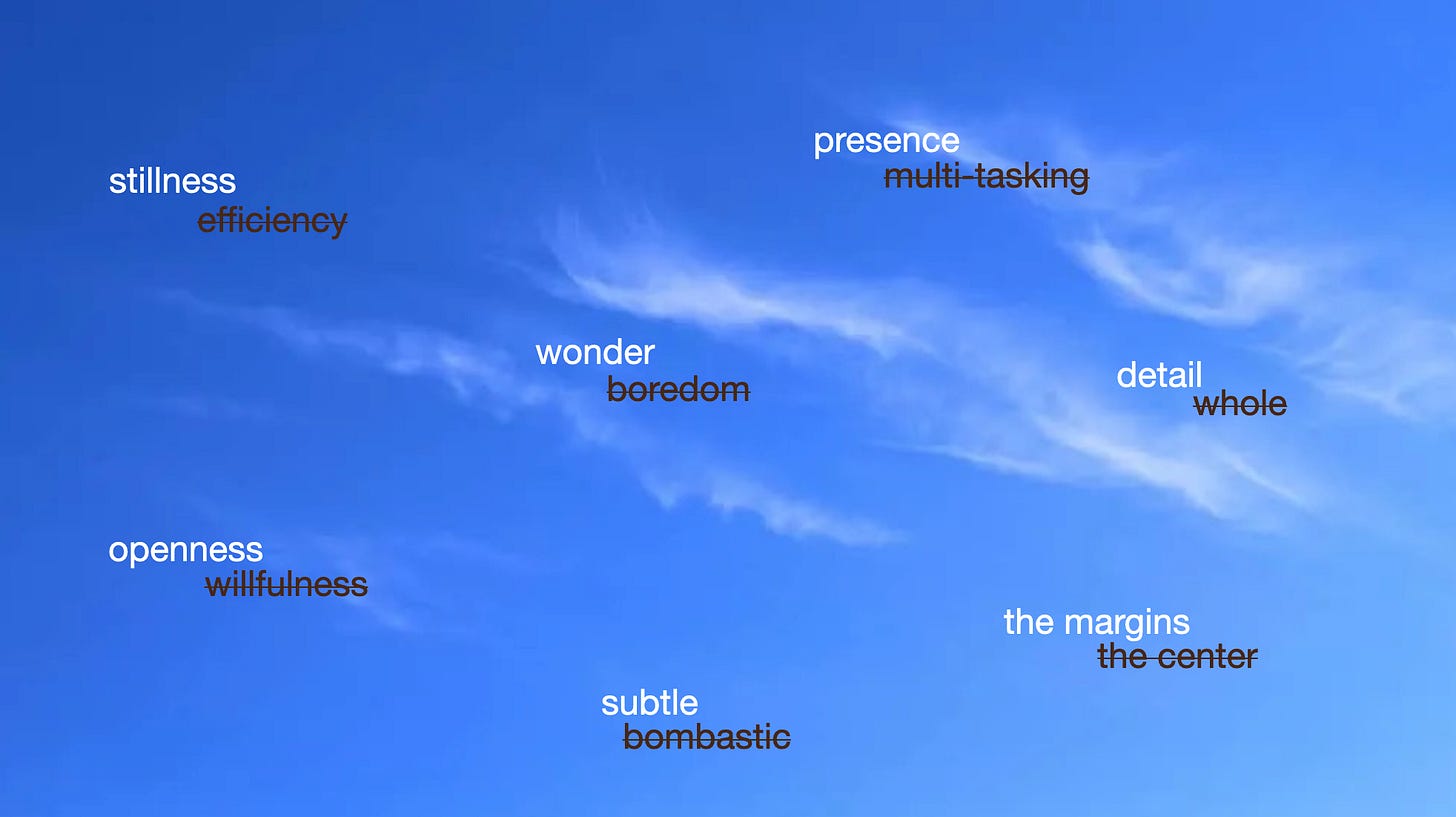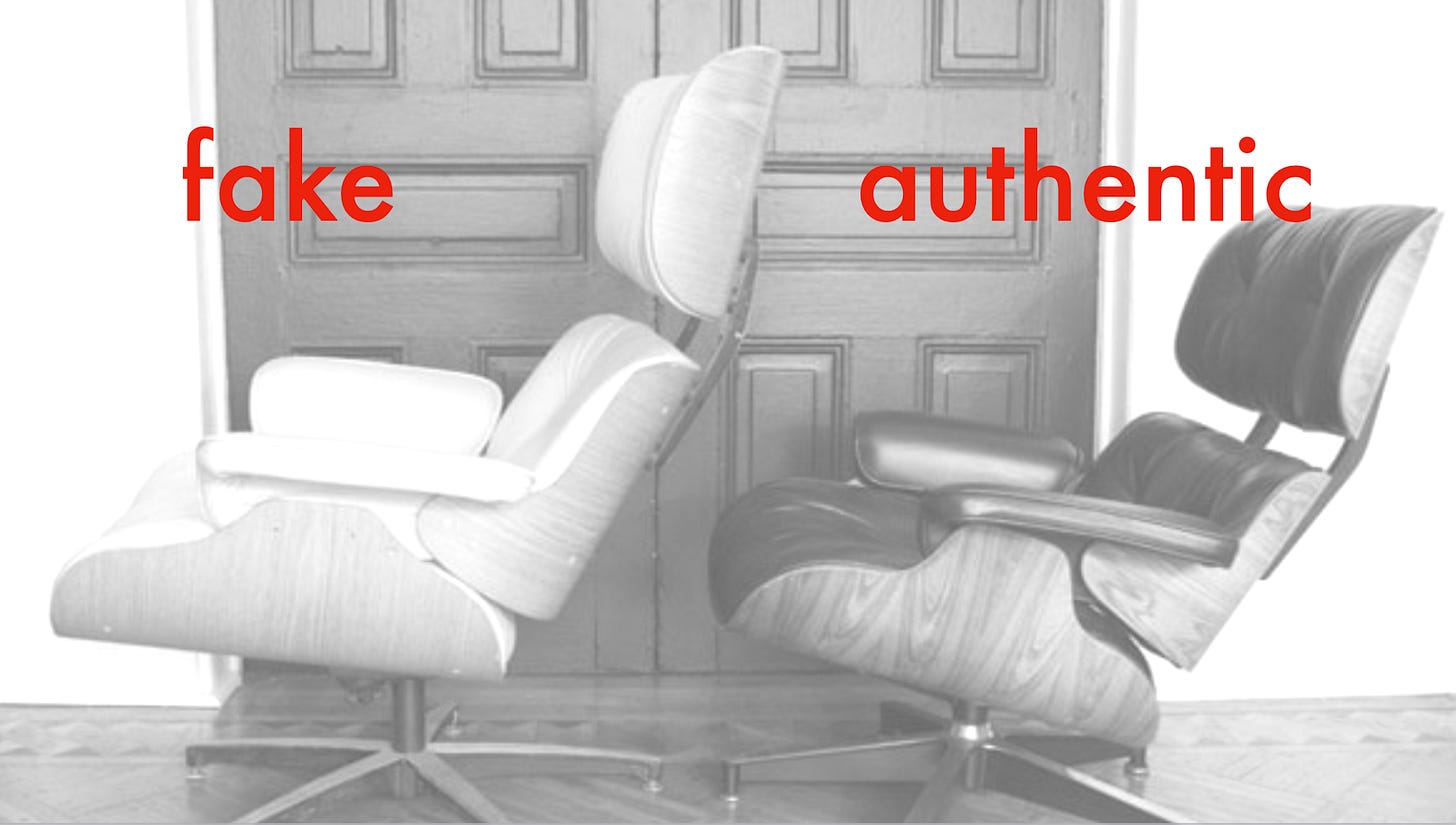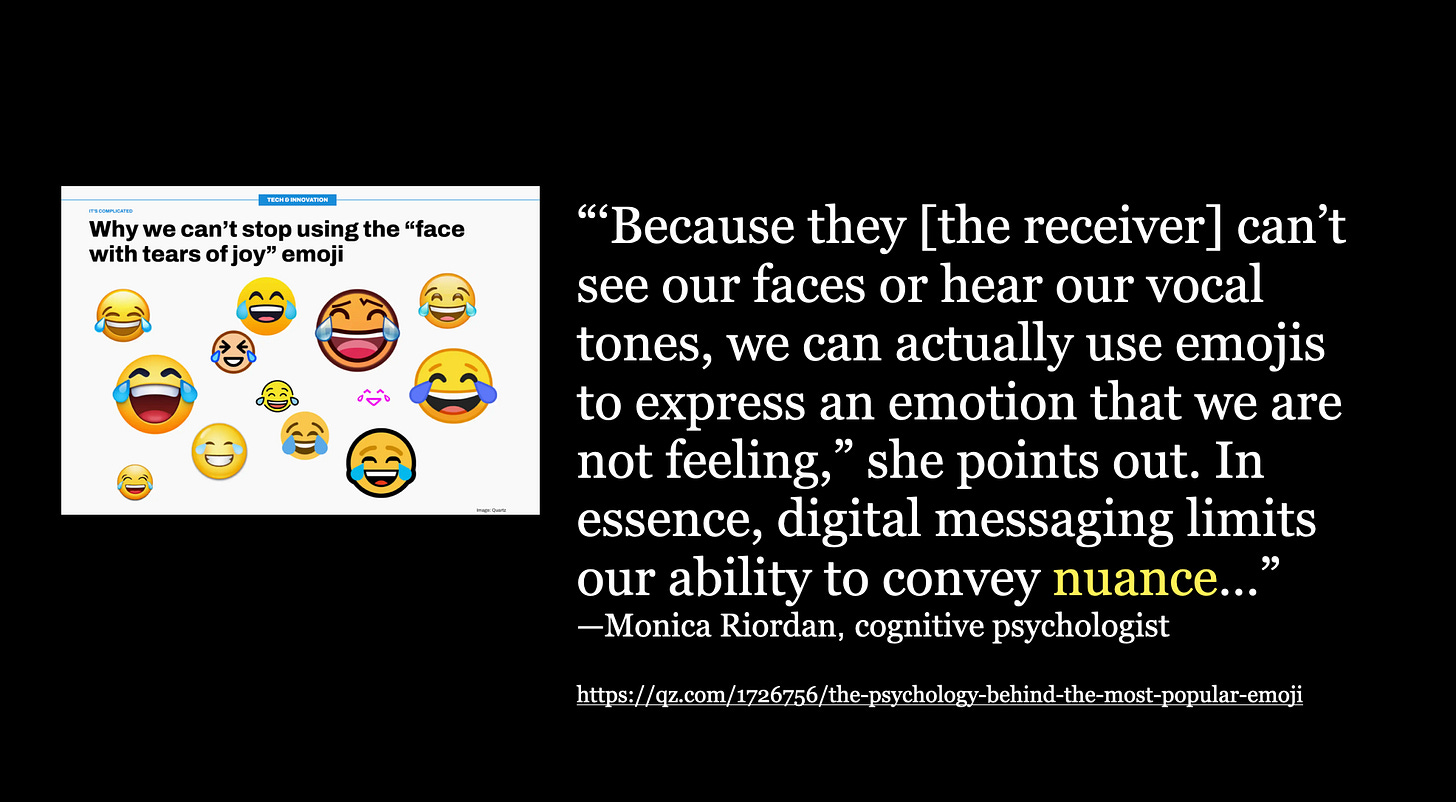The Rest Is Nuance
TAoN No. 180: Attention insight from writer/educator Anne Quito. And more.
This week, a real treat:
My friend and colleague Anne Quito — a terrific journalist and critic on design and other subjects, and one of the most original thinkers I know — and I have for a while now been back-and-forthing about her interest in “nuance,” as a subject. I think it’s such a useful idea to sit with, particularly to anyone interested in really attending to the world (which I hope is all of you!), that I cajoled Anne into a Q&A tracing her interest in and insights on the topic. Our exchange follows.
RW: You teach a five-week graduate course on design history for the School of Visual Arts’ Products of Design program. Last year you started threading in a new theme: nuance. Why? Where did that idea come from?
AQ: As tends to happen, two seemingly unrelated events led to the idea. First, a friend introduced me to Joyce Di Donato, a world-renowned mezzo-soprano who turns out to be an incredible teacher, too. In preparing for her visit, I went down a YouTube rabbit hole watching her coach young opera singers at Carnegie Hall.
This one clip, in particular, where she helps Uruguayan countertenor Agustin Penino extract a range of emotions from a single note, moved me. Performing the climactic scene from Tolomeo where the hero has just ingested poison and is on his last breath, Di Donato suggests that perhaps the act of dying isn't just about sadness. "There could also be a fascination with it," she says, gently. "Maybe there's freedom in this too. It's not all tragic, there's also release." Not only did she understand the subtleties in Handel's opera, she also grasped all the artistic egos at play and knew how to address them. I thought she was a master of nuance.
A few weeks later, I heard one of my students describe design as the act of making "bold strokes that pop". Hearing this both worried and disappointed me. Could that be all that designers aspire to? Still? I thought introducing the idea of nuance might help. As Di Donato teaches us, attentiveness to nuance — to detail, variance, subtlety, shade, context — is what separates the amateur from a master.
It seems like we definitely live more in an era of “big bold strokes” than an era of nuance. How did you go about infiltrating students’ thinking on this?
Well, you never really know what infiltrates but a teacher can plant a seed. I sensed that most of the class was laser focused on their careers. They're in grad school not for poetry, but for useful skills and that New York City design school credential — I get it. So we talked about nuance in pragmatic terms. For example, why are there so many shades of white paint? (The New York Times has a nifty quiz on that. "Hue-bris!") Or, why is it useful to recognize the difference between a swastika and a manji?
We also played an exercise in class. I asked them to fill this statement with words, pictures, or sounds: ____ is not the same as ____. For instance, "Helvetica is not the same as Arial" or "A latte is not the same as a flat white." Their examples were great and it got students talking about things they knew and cared deeply about.
Did all this thinking about nuance influence the way you looked at/experienced/attended to the world?
Yes. Superficially, I've become a hunter for examples of nuance. Stand-up comedians, composers, conductors, dancers, potters, typographers, printers, sushi chefs, shoe cobblers, road work crews who paint lines on highways — they all get it. My ears perk up at the mention of the word. Last weekend I found myself listening to the Nobel Peace Prize-winning journalist Maria Ressa at the Vatican. In a riveting speech about fascism, she said:
“Big Tech transformed social media from a tool of connection into a weapon of mass behavioral engineering. These platforms are not neutral technologies; they are sophisticated systems designed to exploit our deepest psychological vulnerabilities. They monetize our outrage and hate; amplify our divisions; and systematically erode our capacity for nuanced thinking, our capacity for empathy.”
Ruminating about nuance has also made me more present, more attentive, more discerning, and more forgiving. Nothing is so black and white. Experience (or people) are rarely binary — they're more prismatic, I'm learning. Recently, I struggled to understand the motivations of someone who I thought was a friend. Hearing my woes, another friend told me, you know, two things can be true at the same time. I would've probably had less tolerance for this ambiguity (or duplicity) if I hadn't been mulling nuance.
The etymology of “nuance” is linked to the word for "cloud" and "shade.” And in hindsight, I've been thinking about nuance for a while now — even before the wise mezzo-soprano came into my consciousness. Nuance came from watching the clouds shift ever so subtly, peeking between the leaves of the tree outside my window here in Barcelona.
Thank you, Anne, for taking the time to share some nuance wisdom with TAoN!
—> And to all: I recommend stealing the assignment Anne gives her lucky students:
Play the " _________is not__________ " game yourself. Choose examples that involve distinctions you know well but that most people would blur together. Find new examples that you notice by searching for nuance. Think about why you’d overlooked them before.
SUPPORT TAoN
If you appreciate The Art of Noticing and its mission to help you to pay attention to what you care about, and care about what you pay attention to, become a supporter with a paid subscription.
Supporters get extra posts (like this audio essay on what makes a place worth noticing), discussion threads (like this one where supporters are spotting the tiniest flowers they can find), full archive access, and other surprises. Plus you’ll help keep the free edition available to all.
THE NEXT FREE EDITION IN TWO WEEKS
IN OTHER NEWS
Following this post on jot-journaling, I got a question about what one might do with old journals, and there were some pretty great responses in the TAoN chat. These ranged from turning them into art, to burning them in a bonfire.
Also the comments on that journaling post itself were quite good. Wanted to highlight this one from reader Will C: “I have a 'favourite part of the day' journal and have kept it for over ten years. Even on terrible days (such as the day my dad died) I still can find a best part of that day.”
On BlueSky, I’ve started a weekly series of “Nonsense Polls,” as a bewildering goof that I assume no one but me will find funny. Here’s the latest.
Friend of TAoN Daniel Brook on “the dubious return of the Brutalists.”
Fun to hear this early 1960s New York public radio piece on a produce market moving to a new location — great ambient sound. Via The Neighborhoods.
Artist drawing L.A. homes lost in the fires.
Recommended obit: Rutherford Chang. I knew about his White Album project but he did a lot of cool stuff playing with the idea of collection as expression. (Lots of nuance there.)
Nice project: “a microphone next to a sign: ‘Tell us something good that happened to you today.’”
I really love this anecdote from Christopher Walken on the best advice he ever received: “I was a young actor, talking to an older actor. I’m not going to tell you who. As I was leaving the room, he said, ‘Chris! Be careful.’ I walked out the door, and I don’t think a day has gone by that I don’t think about that. ‘Be careful.’ Every day, I think that. And I don’t know what he meant.” Perfect.
OKAY THAT’S IT!
As always, I value your feedback: suggestions, critiques, positive reinforcement, etc. Constructive insults may be directed at me, not at anyone else. I also welcome your tips or stories or personal noticing rituals, things we need a word for, and of course your icebreakers, at consumed@robwalker.net. Or use the comments.
—> Tell someone about TAoN! Or just click the heart symbol. That always makes my day.
And thanks for reading …
rw
RobWalker.net | NB: I use (some) Amazon Affiliate links
All this by Rob Walker PO Box 171, 748 Mehle St., Arabi LA 70032. Send me mail!
To unsubscribe see the bottom of the email, or go here.





"Nuance is the highest level of technique" - Wynton Marsalis. He oughta know! I'm a professional photographer, educator, and writer. I try to pass this on to my students - and myself! - because for all the reasons mentioned in the piece, it's one of the ways people are simply able to produce good work.
Wood is not the same as trees
Green is not the same as grass
Sound is not the same as noise
Tick is not the same as tock
Scribbling is not the same as writing
Devotion is not the same as love
Pause is not the same as stop
Reflection is not the same as understanding
– A bit of spontaneous writing having read your article.